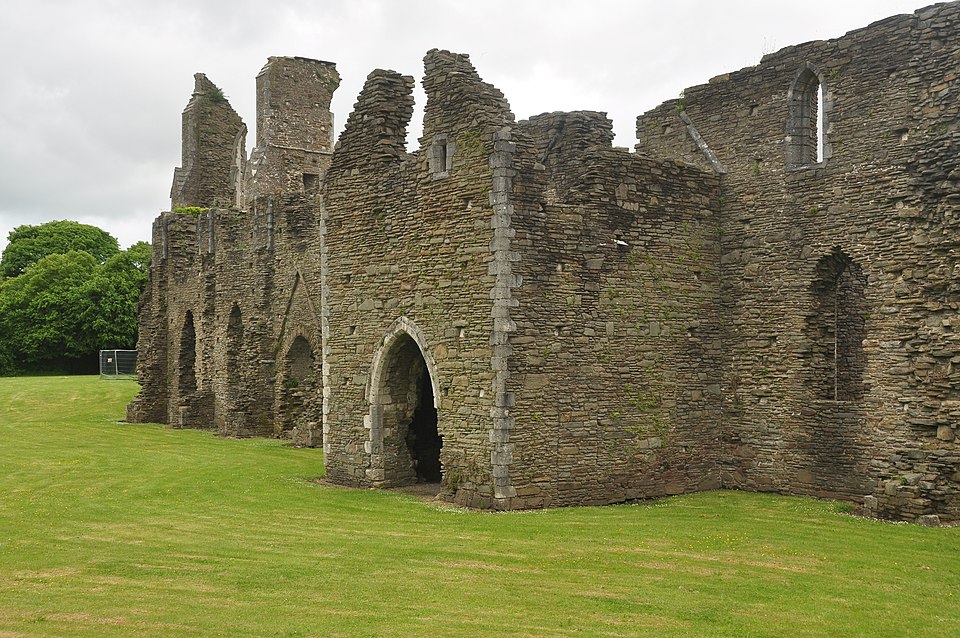Arson Threatens Historic Buildings across the UK: the Link to Dereliction
In recent times, there has been substantial media attention on the fate of derelict or abandoned historic buildings.
A particularly notable BBC article article drew attention to arson attacks in Wales. The article reported that Cadw, the Welsh heritage body, has recorded a significant increase in criminal damage to listed buildings.
The article suggests that 2025 may witness the peak of such incidents. Heritage crime, which encompasses vandalism, theft, and unauthorised activities, continues to be underreported but is experiencing a rise, resulting in financial losses and causing damage to historical sites.
Education and public awareness, coupled with police collaboration, are crucial in preventing these crimes and safeguarding Wales’s rich historical heritage.
This issue transcends Wales and impacts the entirety of the United Kingdom. Historic and listed buildings, celebrated for their architectural, cultural, and spiritual significance, are increasingly susceptible to intentional fires, particularly when left in a state of disrepair or vacancy.
The safety and security implications of this situation have been succinctly encapsulated in this post, while a compilation of some of the most severe arson incidents targeting heritage buildings across the United Kingdom is presented below.
- Parnham House, Dorset (gutted Apr 2017) — 16th-century manor severely damaged by a fire in April 2017; the owner was arrested on suspicion of arson during the inquiry (investigation later closed after his death). The loss and legal drama made this a headline example of a burned country house.
- Littlewoods Pools building, Liverpool (fire Sept 2018) — prominent Art-Deco landmark that had been empty for years suffered a major 2018 blaze treated as suspicious; it highlighted the vulnerability of large, vacant industrial/office heritage.
- Wythenshawe Hall, Manchester (Mar 2016) — Tudor manor damaged in a fire police treated as suspicious; although not totally derelict, the attack on a historic civic building drew attention to threats to at-risk heritage.
- Overstone Hall, Northamptonshire (multiple fires; suspected arson Mar 2023 and earlier incidents) — a long-derelict Grade II hall (burnt-out shell from earlier decades) suffered another large blaze in 2023 that was treated as deliberate; the incident fed into debates about demolition vs restoration of derelict stately homes.
- The Crooked House pub, Himley (gutted Aug 2023 — suspected arson) — 18th-century, much-loved “wonky” pub was gutted in a fire shortly after sale; police treated the blaze as arson, arrests followed, and the owners’ subsequent demolition and a council enforcement order to rebuild made it a nationally symbolic case.
- Ayr Station Hotel, Ayr, Scotland (Sept 2023) — derelict, Category B-listed hotel badly damaged by an evening fire; police treated the incident as deliberate and made arrests. Important as an example of repeated attacks on vacant railway hotels.
- Poltimore House, Devon (suspected arson Apr 2024) — Grade II* manor (long under restoration/at risk) hit by an overnight blaze in April 2024 that fire investigators called “suspected arson”; the charity running restoration described extensive damage to decades of volunteer work.
- Airth Castle Hotel, Falkirk (derelict hotel fire Sept 2024 — probed as deliberate) — an abandoned castle-hotel that closed in 2023 was set alight in 2024; local media and police treated the blaze as suspicious, underlining threats to vacant tourist/heritage properties.
- Clune Park estate, Port Glasgow (ongoing, 2010s–2025) — an entire formerly thriving inter-war estate became largely abandoned and has been repeatedly targeted by arson and vandalism over many years; the accumulation of dereliction+arson made this a major local heritage/regeneration case.
- Edgware / Railway Hotel and a sample of other vacant pubs/hotels (2016 onwards) — a number of long-empty listed pubs/hotels (e.g., the Edgware Railway Hotel) have suffered fires that were treated as suspicious, a pattern illustrating how vacant listed buildings repeatedly attract arson/vandalism. (Representative reporting: local/national press & listed-building trackers).
Context & patterns
Churches and disused places of worship have been a frequent target: insurers and heritage charities reported hundreds of attacks/serious incidents to 2022–24, many at vacant churches. This is a big part of the wider problem of fires in empty heritage buildings. A major factor contributing to the risk is the derelict or vacant state of many historic buildings. When buildings are neglected:
- They often have poor or no security, making them easy targets for vandals or arsonists.
- The lack of regular maintenance can lead to the accumulation of flammable materials and unsafe conditions.
- Derelict sites attract antisocial behavior, further increasing risks. Research and fire service reports show a clear correlation between the condition of being derelict and higher incidence of fire damage.
Fires in historic buildings not only destroy irreplaceable heritage but also adversely affect communities by removing cultural landmarks. The financial burden of restoration is substantial and frequently falls on public funds or charitable organisations.
Although authorities have advocated for enhanced risk reduction strategies, such as improved property management, strengthened security measures, fire detection systems, and community vigilance, more stringent legal frameworks are being advocated to penalise deliberate arson and promote responsible stewardship.






